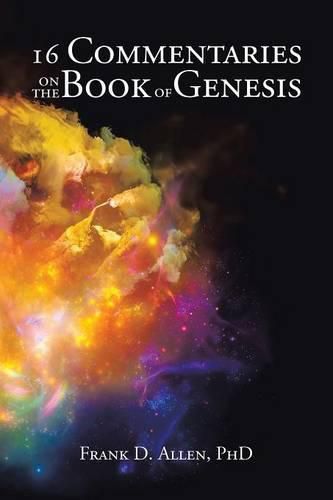Readings Newsletter
Become a Readings Member to make your shopping experience even easier.
Sign in or sign up for free!
You’re not far away from qualifying for FREE standard shipping within Australia
You’ve qualified for FREE standard shipping within Australia
The cart is loading…






This title is printed to order. This book may have been self-published. If so, we cannot guarantee the quality of the content. In the main most books will have gone through the editing process however some may not. We therefore suggest that you be aware of this before ordering this book. If in doubt check either the author or publisher’s details as we are unable to accept any returns unless they are faulty. Please contact us if you have any questions.
The book of Genesis consists of two parts. Part 1 (chapters 1-11) is the Creation, beginning with Adam and Eve in the Garden of Eden. Subsequently, an expanding population from Adam and Eve turned wicked and got slated for destruction. The Lord chose a flood as the means by which it was to be destroyed. The Lord found righteousness in a man named Noah and exempted him and his family from the destruction. The Lord instructed Noah to build an ark to withstand the flood and to place in the ark a male and female of every type of living creature. The people that went aboard the ark were Noah; his wife; his three sons, Ham, Shem, and Japeth; and their wives. Nine generations after Noah, through the line of Shem, came Abram (Abraham), which began part 2 of Genesis, the patriarchal history (chapters 12-50). Only the first three commentaries deal with part 1. Commentaries 4 through 16 all deal with part 2. Commentaries 4 through 7 cover the period from when Abraham left his father's house until his grandson Jacob leaves home to seek a wife among his mother's people. Commentary 8 lays out in detail the well-known confusion in the multiplicity in naming of Esau's three wives. No commentary or suggestion is offered for that confusion. It is what it is. Commentary 9 discusses and comments on the eerie similarities in the accounts of Abraham and Isaac trying to pass off their respective wives as their sisters both for safety and political advantage. Commentaries 10 through 16 cover the events in Jacob's life until its end at age of 147. He died in Egypt, after having his family brought there by his prodigious son, Joseph, to save the family from a famine in Canaan.
$9.00 standard shipping within Australia
FREE standard shipping within Australia for orders over $100.00
Express & International shipping calculated at checkout
This title is printed to order. This book may have been self-published. If so, we cannot guarantee the quality of the content. In the main most books will have gone through the editing process however some may not. We therefore suggest that you be aware of this before ordering this book. If in doubt check either the author or publisher’s details as we are unable to accept any returns unless they are faulty. Please contact us if you have any questions.
The book of Genesis consists of two parts. Part 1 (chapters 1-11) is the Creation, beginning with Adam and Eve in the Garden of Eden. Subsequently, an expanding population from Adam and Eve turned wicked and got slated for destruction. The Lord chose a flood as the means by which it was to be destroyed. The Lord found righteousness in a man named Noah and exempted him and his family from the destruction. The Lord instructed Noah to build an ark to withstand the flood and to place in the ark a male and female of every type of living creature. The people that went aboard the ark were Noah; his wife; his three sons, Ham, Shem, and Japeth; and their wives. Nine generations after Noah, through the line of Shem, came Abram (Abraham), which began part 2 of Genesis, the patriarchal history (chapters 12-50). Only the first three commentaries deal with part 1. Commentaries 4 through 16 all deal with part 2. Commentaries 4 through 7 cover the period from when Abraham left his father's house until his grandson Jacob leaves home to seek a wife among his mother's people. Commentary 8 lays out in detail the well-known confusion in the multiplicity in naming of Esau's three wives. No commentary or suggestion is offered for that confusion. It is what it is. Commentary 9 discusses and comments on the eerie similarities in the accounts of Abraham and Isaac trying to pass off their respective wives as their sisters both for safety and political advantage. Commentaries 10 through 16 cover the events in Jacob's life until its end at age of 147. He died in Egypt, after having his family brought there by his prodigious son, Joseph, to save the family from a famine in Canaan.